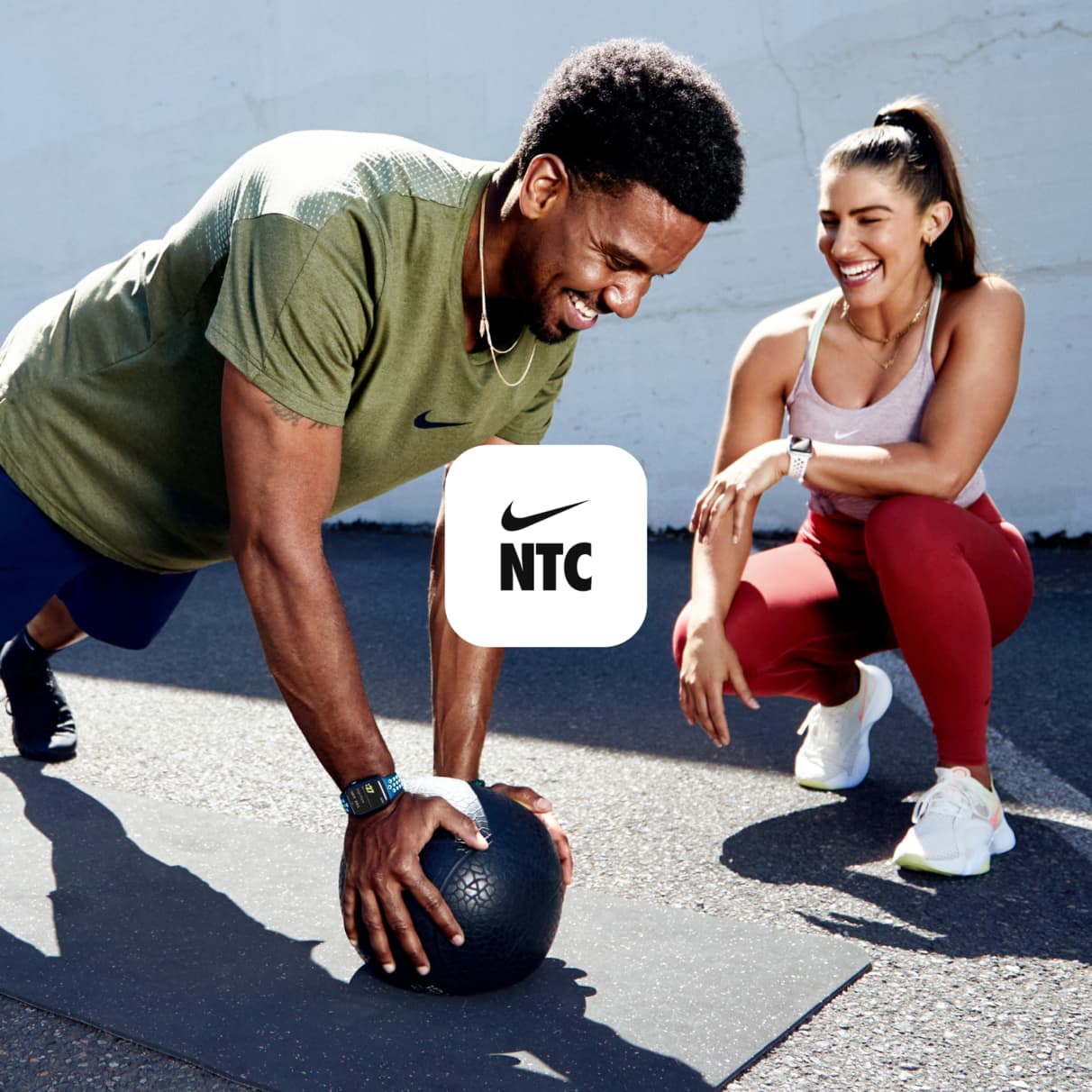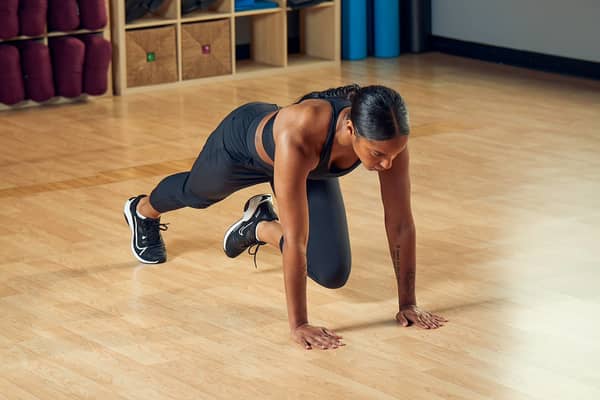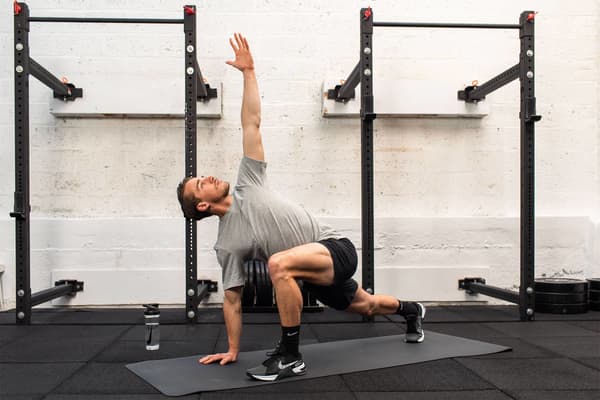What You Need to Know About CrossFit and Your First Murph Workout
Sport & Activity
This popular training style offers plenty of benefits. Here's what you should know.

As far as types of workouts go, few have as strong of a community as CrossFit. And for good reason—it aims to build fitness, strength, power, agility and more with its challenging workouts. But don't let that intimidate you. CrossFit is equally great for people just embarking on their fitness journeys as it is for those who are seasoned veterans.
Read on to learn if CrossFit is right for you.
What is CrossFit training?
"CrossFit training is an effective exercise discipline that's challenging both aerobically and anaerobically and is unlike any other training regime", said Michael Julom, a CrossFit Level 1 trainer and ACE-certified personal trainer.
Training is typically done in an hour-long class at a local CrossFit gym, also known as a "box". The class is led by a certified CrossFit coach who provides instruction on how to perform movements. "At the same time, CrossFit is very versatile in that it can be done in the comfort of your own home or even while you travel", Julom said.
CrossFit workouts focus on functional movements done at high intensity. To achieve this, workouts incorporate various disciplines including gymnastics, Olympic weightlifting, sprinting and kettlebell training. "Movements from these different styles are combined into what CrossFit terms a 'WOD', or 'workout of the day'", Julom said.
WODs follow different formats. Each gets your heart rate up and challenges your strength, fitness and power. Here are a few common formats:
- As Many Reps/Rounds as Possible (AMRAP): this workout style involves performing as many reps of a single move, or as many rounds of multiple exercises, as you can manage within a set time period. Take rest when you need it.
- Every Minute on the Minute (EMOM): to perform an EMOM workout, a timer will go off at the start of each minute. When the timer signals the start of a minute, you'll perform a prescribed number of reps of a given exercise. Once you've completed the reps, you'll rest until the next minute starts. Keep going until the timer runs out.
- Tabata: a Tabata workout is the quickest and most intense form of high-intensity interval training (HIIT). To do it, you'll be asked to perform an intense cardio exercise such as burpees or mountain climbers. You'll take a brief, 10-second breather before getting back to it. You'll do that a total of eight times. And while the total workout is under five minutes, you'll get a full-body burn.
- Rounds for time: some CrossFit workouts prescribe a number of sets. Your goal is to finish those sets as quickly as possible.
CrossFit gyms often come up with their own WODs. The CrossFit organisation also provides WODs on its website.
What You Need to Know About the Murph Workout
The "Murph" is a quintessential CrossFit workout and falls into the "rounds for time" type of workout. In its most traditional format, weighted vests (9 kilos (approx.) for men, 6 kilos (approx.) for women) are worn by athletes for the full workout. The workout includes completing the following movements in order:
- 1-mile run
- 100 pull-ups
- 200 push-ups
- 300 squats
- 1-mile run
Kate Meier, certified CrossFit Level 1 trainer and co-owner of CrossFit Doors of Daring in North Carolina explained that the Murph workout is extremely tough and shouldn't be attempted by beginners. However, like all CrossFit workouts, Murph can be scaled to your ability level. Your goal should be to modify the workout so you can finish in under an hour, Meier said. To start, try shedding the weighted vest.
Then, break up the reps. "Instead of doing all 100 pull-ups, 200 push-ups and 300 squats, you do sets of smaller rep counts", Meier said.
You can modify the exercises, too. Pull-ups can be done with resistance bands or subbed with inverted rows. Push-ups can be performed on your knees or with your hands elevated. If running a total of 2 miles also feels a bit much, cut down the distance to something you can cover in less than 10 minutes. If running isn't available to you, consider an alternative form of cardio such as rowing, riding an assault bike or walking.
If you still think the workout will take you an hour or more to finish, halve the pull-ups, push-ups and squats.
On the day of the workout, make sure you move at a manageable pace. "Murph is one of the longest CrossFit workouts, so do the best version for where you're at", Meier said.
How Fit Do You Have to Be to Do CrossFit?
While challenging, CrossFit training is appropriate for all fitness levels and abilities. "Regardless of how difficult a particular movement is, there is always a scaled version that can be done in place of it", Julom said.
For example, some WODs include advanced exercises such as handstand push-ups and overhead squats. People who can't do these movements (yet) can opt for alternatives. Instead of a handstand push-up, try pike push-ups or incline push-ups. And instead of overhead squats, give goblet squats or bodyweight a try. Most importantly, you need to feel confident in performing each move with a strong technique, especially when fatigue sets in. If your form breaks down, connect with the coach to identify the best modification to remain healthy.
"The whole point of CrossFit is that it can be scaled to anyone's ability, which means that although people might be doing the same workout together, they can be very different variations of the same workout", Sean Klein, co-owner of CrossFit Essor, said. This way, you can build the strength, mobility and fitness needed to progress to more advanced exercises. It also allows people of all different abilities to train together and foster a strong sense of community, he said.
What Are the Benefits of CrossFit Training?
1.It Builds Community
One of the top benefits of CrossFit training is its community. CrossFit workouts are scalable to all fitness and ability levels, enabling people of various backgrounds to work out together. "Everyone is rooting for each other to succeed and naturally becomes bonded by facing the struggle of the workouts together", said Meier.
2.It Mimics Everyday Movements
The focus of functional movement in CrossFit sets it apart from other training methods. "Functional movements are those that we do on an everyday basis", Julom said. These may include carrying kids, picking up heavy furniture or putting away groceries.
"Anyone who does CrossFit will train these movements repetitively and in various ways, and eventually will be able to do those everyday things faster and more easily", Julom said.
3.It Improves Fitness
Research shows that HIIT workouts like those found in CrossFit may build cardiovascular fitness. To be clear, the American College of Sports Medicine (ACSM) defines HIIT as workouts that alternate challenging intervals with a brief recovery. Work periods may range from 5 seconds to 8 minutes and up your heart rate to at least 80 percent of its maximum.
A systematic review and meta analysis published in a 2014 issue of the British Journal of Sports Medicine reveals that HIIT significantly increased VO2 max (an indicator of cardiovascular fitness) in patients with chronic conditions such as heart disease, high blood pressure (hypertension), heart failure and obesity. HIIT increased fitness by almost double that of moderate-intensity continuous training.
Plus, a landmark 1996 study (known as the "Tabata study") found that doing five HIIT workouts per week was more effective for improving aerobic and anaerobic fitness than doing five moderate-intensity cardio sessions per week. The researchers speculate that HIIT simultaneously challenges both the aerobic and anaerobic systems.
4.It Can Be Done at Home
While many CrossFit workouts incorporate equipment such as barbells, rowers and air bikes, there are plenty that utilise minimal equipment. As such, you don't have to belong to a "box" to perform CrossFit workouts.
"They can be done at home, at a hotel and even outdoors", Julom said. "In these situations where equipment is scarce, WODs can be programmed to only include bodyweight movements". Examples include push-ups, burpees, squat jumps and V-ups.
5.It Improves Body Composition
CrossFit workouts can be intense and, therefore, burn plenty of calories. When paired with a healthy diet, recovery and incremental progressions, these workouts may help to reduce fat—which is a perk for those whose main objective for doing CrossFit is to get lean while toning up.
And although research has yet to show that CrossFit has a significant effect on body composition parameters, it does support the benefits of HIIT on it. In a 2021 study published in BMJ Open Sport & Exercise Medicine, adults diagnosed with obesity lost comparable amounts of fat mass after 12 weeks of HIIT to those who performed moderate-intensity cardio. The key difference? HIIT took a shorter time commitment than moderate-intensity cardio sessions. The people who did HIIT also saw greater improvements in fitness.
Words by Lauren Bedosky





